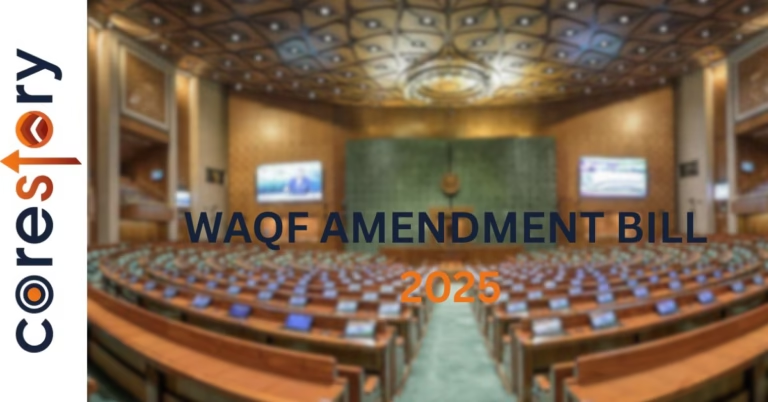
How many subscriptions do you have? OTT platforms, fintech apps, meal deliveries, skincare, and even your daily chai—chances are, a good portion of your monthly spending goes into subscription-based services. This shift from one-time purchases to recurring payments is driving India’s subscription economy, which is projected to reach $12 billion by 2025 (RedSeer).
From content streaming and cloud kitchens to direct-to-consumer (D2C) brands and software-as-a-service (SaaS), companies are rapidly adopting this model to ensure a steady revenue stream. But is this truly benefiting consumers, or is it a clever way to extract long-term spending? Let’s take a deep dive into India’s booming subscription economy.
The Rise of India’s Subscription Economy
India’s digital economy has witnessed rapid transformation, fueled by increasing smartphone penetration, cheaper mobile data, and a shift in consumer behavior toward convenience. Between 2018 and 2023, subscription-based services in India grew at a CAGR of 25%, according to RedSeer. This trend is not limited to entertainment or software—it has extended to sectors like retail, mobility, and even healthcare.
Key Growth Drivers:
- Digital Payments Boom – The rise of UPI and seamless digital transactions have made recurring payments effortless. India saw over 10 billion UPI transactions in August 2023 alone (NPCI).
- Changing Consumer Mindset – Younger consumers prefer access over ownership, whether it’s renting furniture, leasing vehicles, or subscribing to personal care products.
- D2C and SaaS Explosion – Direct-to-consumer brands like Lenskart, Sugar Cosmetics, and Mamaearth are leveraging subscriptions to build a loyal customer base. Meanwhile, SaaS businesses like Zoho and Freshworks thrive on monthly or annual subscription models.
- Regulatory Push for Transparency – RBI’s auto-debit rules implemented in October 2021 have added security layers, ensuring consumer consent in recurring payments (RBI).
Who’s Winning? The Business of Subscriptions
The subscription model benefits businesses by ensuring predictable revenue and reducing dependency on one-time sales. According to RedSeer, subscription-driven businesses in India are seeing higher customer retention rates, with an average of 30-40% lower churn compared to traditional models (RedSeer).
Sectors Leading the Subscription Wave:
- OTT & Entertainment: Netflix, Hotstar, SonyLIV, Zee5 dominate the space, with India’s OTT subscription market estimated to hit ₹12,000 crore ($1.5 billion) by 2025 (Media Partners Asia).
- Fintech & Banking: Subscription-based fintech products like CRED, OneCard, and Paytm First offer cashback, credit management, and premium financial services.
- Cloud Kitchens & Food Subscriptions: Zomato Gold, Swiggy One, EatClub, and Rebel Foods have launched meal plans to drive repeat orders.
- D2C & E-commerce: Brands like Blinkit, Amazon Subscribe & Save, and Nykaa ensure repeat purchases with subscription discounts.
- EdTech & SaaS: B2B SaaS companies, Byju’s, Unacademy, and Coursera, thrive on monthly student and enterprise subscriptions.
Subscription Fatigue: Are Consumers Benefiting?
While subscriptions promise convenience, they come with challenges. Consumers often lose track of multiple payments, leading to subscription fatigue—a phenomenon where people feel overwhelmed by too many recurring expenses.
According to a 2024 survey by LocalCircles, 35% of Indian consumers subscribe to at least five services, while 21% struggle to track their recurring expenses (LocalCircles). The biggest concerns include:
- Auto-Renewals & Hidden Costs – Many platforms make cancellation difficult, leading to unwanted renewals.
- Bundling of Unused Services – OTT platforms and fintech apps offer “all-inclusive” plans, often charging for features users don’t need.
- Price Creep – Companies lure customers with low introductory pricing, only to increase rates later (e.g., Netflix’s 2016 ₹500 plan now costs ₹649).
Regulations & Consumer Protection: A Balancing Act
Recognizing the risks of misleading subscriptions, the RBI introduced new auto-debit rules in 2021, requiring explicit customer consent for recurring payments above ₹5,000 (RBI). The Consumer Protection Act, 2019 also empowers users to file complaints against unfair billing practices. However, challenges remain:
- Many businesses still make cancellations a cumbersome process.
- Indian laws do not fully address refund policies on digital subscriptions.
- The RBI’s Tokenization Framework has improved payment security, but consumers still face unauthorized auto-renewals.
The Future of Subscriptions in India
- With rapid expansion, the subscription model will likely evolve beyond its current form. Future trends include:
- AI-Powered Personalized Subscriptions – Platforms like Spotify and Netflix are already using AI to recommend subscription tiers.
- Micro-Subscriptions – Pay-per-use or daily subscriptions (e.g., pay-per-day insurance models like ACKO).
- Sustainability & Circular Economy – Rental and subscription-based ownership models for electronics, cars, and appliances.
- Regulatory Refinements – Stricter cancellation and refund laws to protect consumers.
According to Bain & Company, India’s subscription economy could surpass $20 billion by 2030, driven by affordability, personalized pricing, and a stronger digital payments ecosystem (Bain & Company).
The Battle for Your Wallet
The subscription economy is here to stay, transforming how Indians consume entertainment, financial services, and everyday essentials. While businesses thrive on recurring revenue, consumers must remain vigilant about auto-renewals, price hikes, and subscription overload.
So, before signing up for that next “only ₹99/month” offer, ask yourself: Do I truly need it, or is it just another slice of my budget disappearing into the ever-growing subscription economy?



